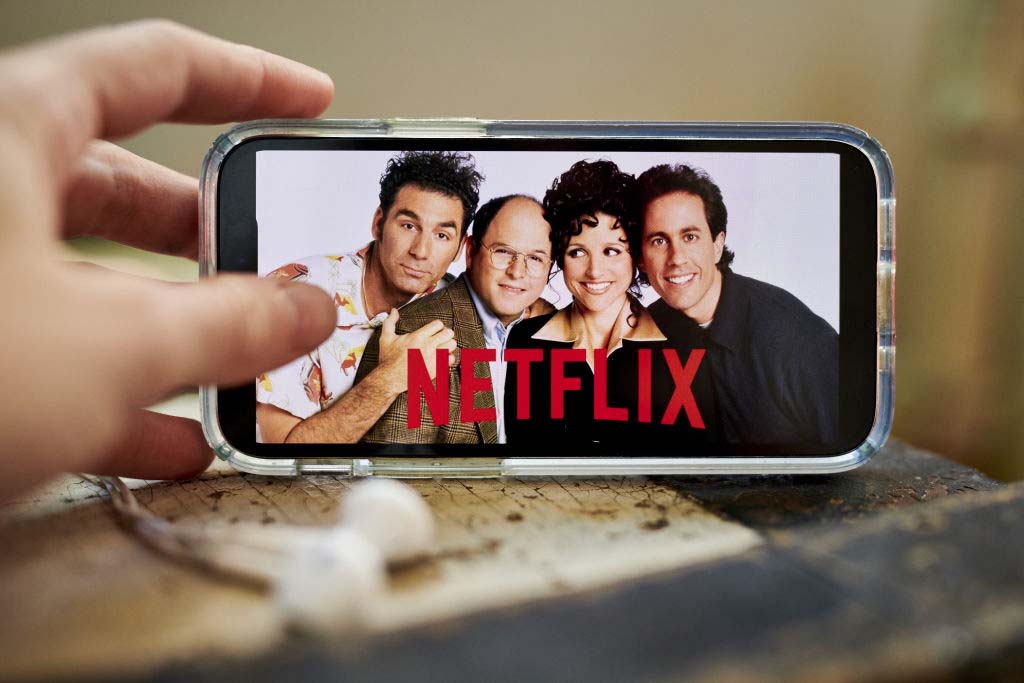Even With a Trove of Streaming Content at Their Disposal, Studios Will Struggle To Weather Writer’s Strike (Guest Blog)
Expect viewers to tire of library content, reality shows and want something new

It certainly seems like the perfect era for a writer’s strike.
In the days of streaming, where virtually all content from every era of cinema and television is available on demand, distributors should be equipped to weather the current Writers Guild of America (WGA) work stoppage.

After all, Friends and Seinfeld, two hit shows from almost three decades ago, are two of this generation’s most-watched properties. On its own, Disney Plus is host to every Simpsons episode and all of the Marvel and Star Wars cinematic masterpieces and recently released companion shows, one of which just premiered (Ahsoka). Indeed, there is a whole genre of blog content and podcasts dedicated to “rewatches” of TV shows, as viewers try to dissect every bit of minutiae from frame to frame. More than 100 days into the WGA strike, there’s seemingly no reason for producers to rush a resolution.
That assumption, though, is based on an incredibly flawed rationale. As the backlog of content begins to get whittled away, studios need to act on the jarring reality that they should already know: Viewers will eventually tire of the unscripted content and retread shows and begin to crave new content. This is not a problem that will be solved with bond repurchases or economies of scale: It’s all about the content.
Old is New Again … for Now
Streaming executives may blanch at this notion, but the proof is in the customer behavior. While newly released streaming shows are in fact among the most-watched properties, customers regularly watch entertainment that has long since passed their network run (as seen, most recently, in this summer's explosion of popularity of Suits). Why, a streaming executive may ask, should there be pressure for a settlement when generations of customers haven’t experienced these classic properties yet?
While nostalgia is certainly a key ingredient in the streaming business model, it can only drive customer satisfaction so far. It’s a symbiotic relationship between the past and the future that gets thrown wildly off balance when the faucet of new content turns to a drip, and eventually, turns off entirely. A current cinematic masterpiece gets measured against Casablanca or Citizen Kane, modern sci-fi may get held up to the standard of Star Wars or Blade Runner. But these classics remain classics because viewers keep getting new contributions to which they can make those comparisons.
Executives may indeed think they can rely on the backlog of content they have in the can. Ted Sarandos, Netflix’s co-CEO, openly admitted as much on the company’s first-quarter earnings call, echoing the thoughts of many studio executives when he said that the “large base of upcoming shows and films from around the world […] can probably serve our members better than most.”
“Probably” is the operative word here. Hard Knocks, an annual unscripted hit for HBO, is putting up big numbers this summer by chronicling Aaron Rodgers’ first season with the New York Jets. Ahsoka, a new hit for Disney Plus, debuted to impressive numbers. These shows and others may in fact help Max and Disney Plus for the rest of the summer and the bulk of the fall. But what happens when those shiny new things lose their luster?
Avoiding the 2007 Mistake
The reality is that streaming likely has enough content already in post-production to make it another six to nine months down the road. That time will go incredibly fast, and every day a settlement proves elusive is a day closer to the leverage scales tipping the WGA’s way and meaningful, lasting damage to the industry as a whole.
Look no further than 15 years ago to the last WGA strike that lasted from November 5, 2007, to February 12, 2008. This current strike has already outlasted the ‘07-’08 version; a sobering realization when one considers just how much of an effect that dispute had on the industry at large.
New shows were thrown into chaos just as they were gaining some momentum. Viewership, particularly late-night viewership, eroded and never quite returned. True, the media of television, movies and streaming isn’t going away, but how users interact with them can fundamentally change in unpredictable ways. No medium is irreplaceable or permanent — just ask print media executives.
A Deal for the Future
Dragging out the writers’ strike, which keeps thousands of people out of work, may ultimately lead to a short-term advantage for studio executives, but it comes at the sacrifice of the long-term health of industry. As we’ve seen again and again, the true ticket to long-term, sustainable revenues for studios is high-quality content. By eroding it — either through virtual production techniques or scripts written by generative AI — the customer experience begins to suffer.
Even as streaming services give customers a better way to weather this strike than the last, it is in everyone’s best interest to wrap this up in a hurry, before the backlog of yet-to-premiere content evaporates. When it does, studios may find out the hard way that nostalgia is only a commodity when experienced alongside the present day.
Broadcasting & Cable Newsletter
The smarter way to stay on top of broadcasting and cable industry. Sign up below
Ian Greenblatt is managing director of the Technology, Media and Telecommunications Intelligence practice at J.D. Power.
